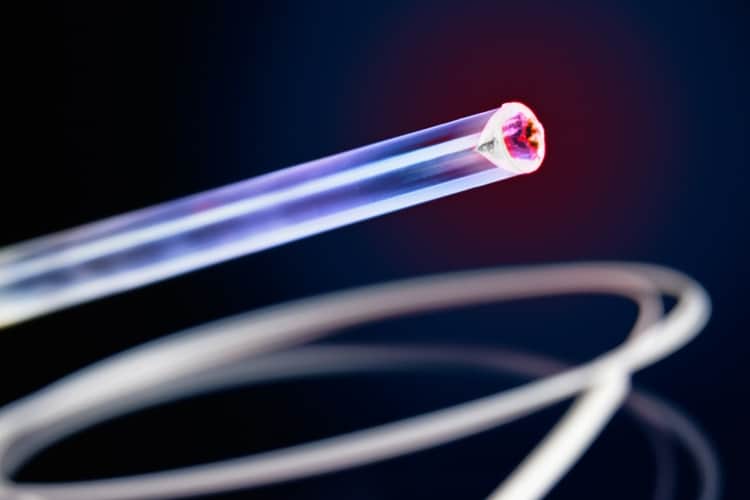The technique, which has been demonstrated by a team at the Fraunhofer Institute for Reliability and Microintegration (IZM), could, it is claimed, be used to automate the production and improve the quality of the optical fibres that are used to treat various types of venous disease such as varicose veins or thrombosis.

Endovenous laser vein therapy typically uses a plastic-coated 0.5mm diameter optical fibre which is inserted into the affected blood vessel.
During the procedure, laser light is conducted through the middle of the fibre to the fibre tip, and at a temperature of several hundred degrees, the emitted light cauterizes the tissue and causes the veins to collapse.
To ensure that the light strikes the sidewalls of the vein directly, the fibre tip is tapered with a cone-shaped indentation that forms a reflective surface for the laser light. The process developed by the Fraunhofer team uses a laser specially developed for glass processing to precisely shape the tip.
“The method enables the first automated series production,” explained Dr. Henning Schröder from Fraunhofer IZM. Until now, producing the fibres required complicated mechanical and manual processes that not only took significantly longer, but cost more too. “What’s more, replicating a suitable product is extremely difficult,” added Schröder. Automation ensures consistent high quality.
The team is now trying to achieve even finer dimensions, which can no longer be produced by hand: the goal is optical fibres with a diameter of only 100-200 micrometers. It is though that these could open up new applications in the area of optical sensors, for instance as micro optics for visible light communication (VLC) – a technology for optical data transmission.

Project to investigate hybrid approach to titanium manufacturing
What is this a hybrid of? Superplastic forming tends to be performed slowly as otherwise the behaviour is the hot creep that typifies hot...